GM's All-New Ecotec Engine Family Detailed

General Motors unveiled its brand-new family of Ecotec small-displacement engines at its Powertrain Headquarters in Pontiac, Mich. this morning. The lineup will include 11 separate powerplants in both three- and four-cylinder configurations.
The new Ecotec lineup will eventually replace three different engine families on the market today. Not surprisingly it’s designed to meet the needs of GM’s global customers. By the year 2017 it will be available in vehicles from the company’s five different brands and under the hoods of 27 separate nameplates. Additionally these engines will be built at five separate facilities around the world, from Flint, Mich. to South Korea and even Hungary.
For a little perspective, the company plans to manufacture 2.5 million of these powerplants annually. That works out to about 10,000 engines per day and accounts for a quarter of GM’s annual engine volume. To say this is an important project for the company is a gross understatement.
CLEAN-SHEET DESIGN
Steve Kiefer, vice president of global powertrain engineering at GM, said this family “was designed using a clean-sheet approach.” As with manufacturing they leveraged a global workforce to develop the new Ecotec lineup, with some 300 engineers at five powertrain centers around the world helping create it.
Four three-cylinder variants of this engine family will be offered. They’ll be available in a variety of flavors, some with port fuel-delivery, others with direct injection and turbocharging and still another that runs on liquefied petroleum gas, LPG.
On the four-cylinder front, six separate variants will be available, again with different fuel delivery, aspiration and displacement. At this point there’s no information to share about which of these engines will be offered in the U.S.
A hybrid version of the new Ecotec family will also be offered, but there are absolutely zero details to share about it at this time.
The objectives of this program were many and stringent. Abundant power and torque levels were a must, as was world-class quality and reliability. But aside from these fundamentals NVH, that’s noise, vibration and harshness was a top concern. Engineers worked to eliminate this undesirable trio.
Tom Sutter, global chief engineer of the new Ecotec engine said “we wanted to be the best in segment for noise and vibration.” The lineup features numerous features designed to quell the ruckus of internal combustion.
To keep cost down and simplify manufacturing, Kiefer said there’s “a high level of commonality between the variants.” Components including front and cam covers, roller finger followers, sensors, the cam-drive assembly and fasteners are all identical between the 11 different engines.
NERDY NUMBERS
With naturally-aspirated and turbocharged variants it’s understandable that compression ratios vary; they have to in order to keep cylinder pressures in check. According to the folks responsible for the new Ecotec family they range from 10 to one on the low end to 12.5 to one on the high end. Saving customers money at the pump, every version of the engine is designed to run on regular-grade fuel.
On models equipped with DI, the fuel injector is located directly in the center of the combustion chamber. This is something engineers learned from their ongoing experimentation with HCCI technology, homogenous charge compression ignition.
That central location of the fuel-delivery nozzle has several benefits. “You get a nice homogenous mixture” Sutter said, adding that the intake-port design incorporates a high-tumble design, which also helps facilitate a clean, complete burn of the air-fuel mixture.
QUIETER BY DESIGN
An integrated exhaust manifold improves the responsiveness of turbocharged models and helps the engine warm up quickly for maximum efficiency; customers will appreciate this engineering upgrade on cold days.
Segment-leading NVH was a major concern of the Ecotec program and there are several features that keep things quiet and smooth. The direct-injection components are rubber-isolated and mounted in the valley of the cam cover to eliminate noise transmission. The high-pressure fuel pump is totally encapsulated to keep ruckus at bay. Additionally the cams are driven by light-weight aluminum phasers that feature inverted-tooth tears and a quiet chain-drive assembly.
All of these new Ecotec engines feature a bed-plate lower end for maximum strength and reduced NVH. Beyond this expensive feature, turbocharged models all have forged-steel crankshafts.
The result of this attention to detail is noticeable. Company representatives claim their new 1.4-turbo is dramatically quieter than Volkswagen Group’s new 1.4-turbo found in the Audi A3. Their 1.0-liter three-cylinder is a claimed three decibels quieter than Ford’s equivalent EcoBoost engine. Supposedly it’s also more fuel efficient and refined, probably thanks to its block-mounted balance shaft, a feature Ford’s three-banger lacks.
EFFICIENCY IS CRITICAL
GM’s new 1.4-turbo is allegedly five percent more efficient than the similarly sized engine in today’s Chevy Cruze. That may not sound like much, but it’s a pretty big deal. Engineers fight tooth and nail for every tenth of a percent they can. The new engine is also a whopping 44 pounds lighter, though to be fair today’s 1.4-turbo has an iron block; the new Ecotecs are all aluminum.
Saving even more weight, port-fueled variants feature cast-iron crankshafts with hollowed out mains and throws. This is a pretty clever way of cutting mass.
Further boosting efficiency, a variable-displacement oil and switchable water pump help reduce parasitic losses while a roller finger-follower valvetrain minimizes friction. Additionally the block features an open-deck design, something that allows the cylinder bore to expand slightly as the engine heats up. This results in a quieter engine and reduced oil consumption because the bores don’t distort relative to the piston, plus it’s better for fuel economy. Since the bores are more stable they can run low-tension rings on the pistons without adverse side effects.
Start stop has been integrated into these engines from day one, something that should help significantly curb consumption.
STRINGENT TESTING
When it comes to displacement the new Ecotec engine family is pretty petite by typical Detroit standards, but their small size doesn’t mean they’re not tough. Proving their durability more than 1,600 experimental engines have been built and put through their paces. More than 270 of those have gone through GM’s full-endurance test, which runs them nonstop at wide-open throttle, at peak power and torque for an entire month.
Altogether engineers have subjected the Ecotec to over two million miles of tortuous durability testing. Additionally, they’ve been run in more than 735 prototype vehicles around the world. Counting the days, GM’s team has been working on this program for about three years.
The first of the new Ecotec family will launch this summer in the Opel Adam. This city car will feature the 1.0-liter three-cylinder version of the powerplant. After that GM is expected to release the all-new Chevy Cruze in China. It will offer 1.4- and 1.5-liter versions of this engine. Naturally variants will be offered in the U.S. but there’s no news to share about which ones will be available here.
GALLERY: GM’s All-New Ecotec Engine Family
Discuss this story on our GM forum

Born and raised in metro Detroit, Craig was steeped in mechanics from childhood. He feels as much at home with a wrench or welding gun in his hand as he does behind the wheel or in front of a camera. Putting his Bachelor's Degree in Journalism to good use, he's always pumping out videos, reviews, and features for AutoGuide.com. When the workday is over, he can be found out driving his fully restored 1936 Ford V8 sedan. Craig has covered the automotive industry full time for more than 10 years and is a member of the Automotive Press Association (APA) and Midwest Automotive Media Association (MAMA).
More by Craig Cole



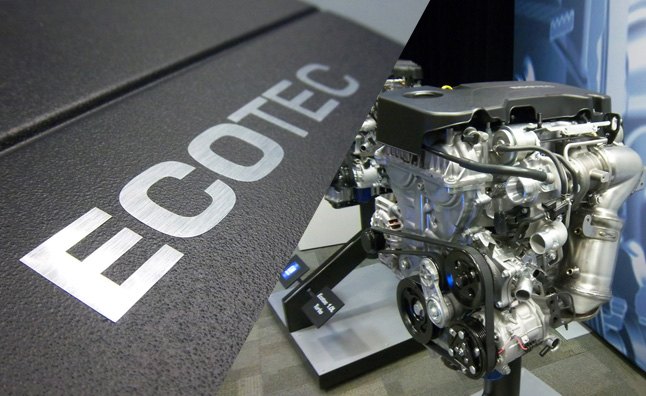












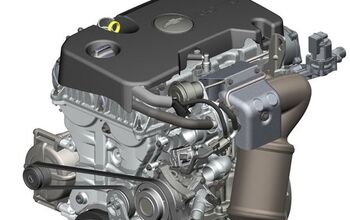
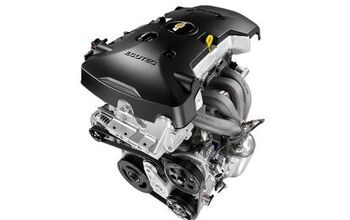









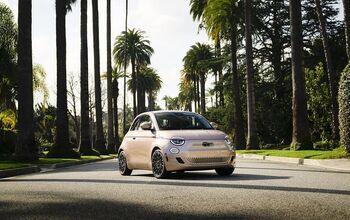

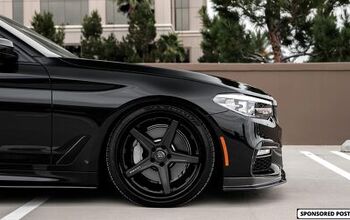

Comments
Join the conversation
It seems like a very unusual and costly way to build an engine - with the bulk of every engine being a four cylinder unit (block, apparently head, etc.) and only putting three pistons in the smaller engines. "(Greater displacement is achieved either by adding an extra cylinder or increasing the stroke. All blocks are the same (whether theyre three- or four-cylinder))". If all blocks are the same, they all must be four cylinder! These are durable engines to be able to run at full-throttle, non-stop for an entire month, as stated. "(More than 270 of those have gone through GMs full-endurance test, which runs them nonstop at wide-open throttle, at peak power and torque for an entire month.)" Very tough!
Those engines certainly aren't designed for typical American drivers; they almost seem designed to fail if you run 'em hard. Hollow camshafts? Barely a quarter-inch of aluminum between cylinders? RUBBER isolating components? Ok, I'll accept 150-175hp from one of the bigger ones; my Saturn Vue with a 2.4 EcoTech ran well with that horsepower range and simply wouldn't die even with a binary foot (hard on or off in town). But the dimensions described and some of the other factors here make me worry that they are literally designed to break--making them cheaper to replace than to repair.